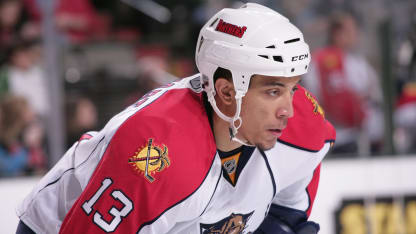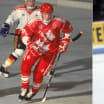So would the Greater Toronto Hockey Association. The world's largest minor hockey league added Seaside Hockey to its membership in July as part of its effort to make the sport more diverse and inclusive.
"This group came to us with a really solid plan and a strong leadership that is dedicated and passionate about bringing hockey back to that community," said Scott Oakman, the GTHL's executive director and chief operating officer. "It was a really good fit."
Seaside is the brainchild of Brooks, the founder of the minority-oriented Skillz Hockey school, his son Nathaniel Brooks, a coach at Ryerson University in Toronto, and former NHL forward Anthony Stewart.
The program's name pays homage to the Colored Hockey League of the Canadian Maritimes that was founded in 1895 and operated until the 1930s, and was comprised of the sons and grandsons of escaped United States slaves.
Nathaniel Brooks said Seaside hopes to register 50 to 70 players this fall for three hours of developmental training per week run by professional coaches.
The program will have house league teams that bear the names of Colored Hockey League teams like the Jubilees, Eurekas, Stanleys and Moss Backs. The program plans to have an Under-7 team compete in the GTHL within three seasons.
"What we want to try to do is run a professionally-run, Black-managed, not for profit minor (hockey) organization that can be used as a blueprint," Kirk Brooks said. "One of the things we're trying to do is create a safe space. When a young brother or sister comes in and they've got dreads, or twists or a big Afro or lines in their hair, baggy pants, we provide a safe space where these children can come, be themselves, let down their hair, have some fun and build confidence playing hockey."
But for now, it's all about getting players, which has Kirk Brooks pounding the pavement, knocking on doors, chatting up school principals and stopping young inline skaters on the street.
"We've got a list of players already that know that Seaside is coming," he said. "And there are thousands and thousands of kids out here in this neighborhood running around every single day. You know what they say in presidential elections, 'the ground game is what wins.' Our ground game is really strong."
Recruiting players in Scarborough was easier when the area boasted more than 10,000 GTHL players nearly two decades ago, Oakman said.
The area gained a reputation as an incubator of Black hockey talent. Mike Marson, who became the NHL's second Black player (after Willie O'Ree in 1958) following his selection by the Washington Capitals in the second round (No. 19) of the 1974 NHL Draft, former goalie Kevin Weekes, former forwards Joel Ward, Anson Carter, Stewart and his younger brother Chris Stewart and Toronto Maple Leafs forward Wayne Simmonds each trace their hockey roots to Scarborough.






















